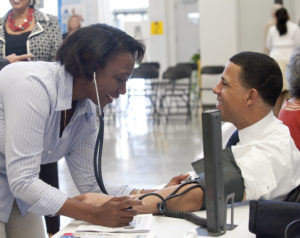
Hey nurses, have you ever had that dull, achy feeling in your legs at the end of a long shift? You don’t need to feel that way. Knee high compression stockings can cure that dull, achy feeling and leave you ready for your next adventure. Wearing compression socks means better blood flow and less swelling. Once you’ve tried a pair of knee high compression stockings, you won’t want to leave home without wearing a pair of compression socks.
Let’s talk about Knee High Compression Stockings for Nurses…
Compression socks or stockings are made with a snug material that applies gentle and consistent pressure in a graduated and balanced format along the leg. Basically, the most pressure is in the foot, and the pressure continues upwards through the length of the stocking material. This promotes blood flow back to the heart. For a nurse who spends long days on their feet, this means that your legs are less tired at the end of the day, and there is no sign of swelling or puffiness in the feet, ankles, and calves.
Best Compression Socks for Nurses
Face it; you’re working hard for 8, 12, or 16 hours a day! You need a high quality compression sock. Here are the best compression sock options for nurses:
- Knee high compression stockings
- Compression tights
- Thigh high compression stockings
- Ankle high compression stockings
- Compression sleeves for the calf
Of the best options in compression stockings for nurses, we prefer the knee high since they are the most comfortable, and provide the greatest support. As an added bonus, they’re stylish and used by professionals in many fields other than nursing. Thanks to a few professional athletes, you can be on trend as a nurse in your knee-high compression stockings.

Compression tights cover the entire leg and lower abdomen, but can be hot, especially for a busy nurse. Feedback received from nurses that have tried compression tights cite a more constricted feeling and less comfort when compared to the knee high compression stockings. Tights are ideal for nurses or others who have experienced increased swelling that affects their thigh veins as well, or if they are otherwise recommended by a doctor.
Thigh high compression stockings work well, but are known to shift down during a busy schedule when a nurse is on their feet non-stop, and running around from patient to patient. Basically, the thigh-high compression stockings are a bit higher than the knee, usually mid-thigh. There is a thicker band that is supposed to hold them in place. This can be slightly uncomfortable, and lead to bunching for people with an active lifestyle, including nurses. The last thing you want to do is stop and adjust your thigh high compression stockings mid-shift because they’re creeping down toward your knee.
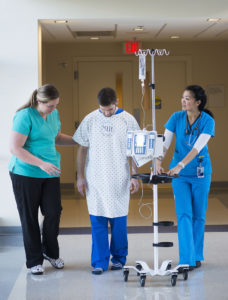
The ankle high compression socks work well on promoting circulation in the foot and ankle and reducing swelling in those areas. But, the ankle sock fails to provide any compression or support to the calf, and therefore cannot help prevent varicose or spider veins. Left untreated, these varicose or spider veins can become a larger medical issue. Finally, we like the compression sleeves for the calf, but without providing compression on the foot, the swelling in your feet can still occur. So, at the end of the day, you might take off your compression sleeve on your calf and notice a puffy foot, but normal ankle and calf. This can lead to other problems over the long term if you don’t switch to the knee-high compression stockings.
For nurses, the best option is the knee-high compression stockings. They provide maximum support and effectiveness, without sacrificing comfort or style. Knee high compression socks are also the most recommended by doctors and medical professionals. But, there are many other reasons to try compression clothing. Socks and stockings are the most common and effective among nurses, so it’s recommended that nurses start with those. It may be the only compression clothing that you need.
Why Compression Stockings
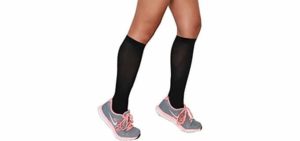
Have you ever gone home at the end of a long day, slipped off your shoes and socks, and noticed that your feet and ankles are puffy? It freaks you out a little bit the first time it happens, and your mind races while you wonder what caused the puffiness, and how to fix it.
Unfortunately, those puffy feet and ankles are a normal symptom of poor circulation as we age, and left untreated, can lead to more serious health concerns. People who spend long periods of time either sitting or standing may notice this puffiness at a younger age. Often by the time it starts, enough damage has been done that wearing compression socks is essential to keeping the feet, ankles, and legs healthy.
Nurses (and others!) wear compression socks for several reasons, including:
- Minimize pain and swelling in the feet, ankles, and legs,
- Extra support for long hours on your feet,
- Improve circulation,
- Decrease venous pressure,
- Prevent or minimize spider and varicose veins,
- Prevent blood clots and deep vein thrombosis, and
- Improve the flow of oxygen to the muscles.
The first reason to wear compression socks is to minimize that pain, swelling, and puffiness in the feet, ankles, and legs. Knee high compression stockings will keep the blood flowing and the puffiness disappears. The compression offers extra support for the long hours that a nurse spends on their feet.
Imagine sitting on a stool without a back support all day. Now, imagine sitting on a stool with a back support for the entire day. Sure, you would be tired at the end of the day either way, but the back support on the stool will leave you less tired than not having one to support your back.
That’s also how compression socks work for your legs. They offer that extra bit of support to the feet, ankles, and calves. You’ll still be tired at the end of your shift, but not nearly as depleted as you would be without the compression stockings.

Blood circulation is fairly well understood by everyone, especially nurses. The heart pumps blood throughout the body. Then, it is returned to the heart, and pumped back through the body. Blood travels in veins and arteries. Compression supports those veins and improves your circulation. Improved circulation leads to a decrease in venous pressure. This in turn prevents or minimizes spider and varicose veins.
Left unchecked, the spider and varicose veins can cause blood clots and deep vein thrombosis. These can be life threatening conditions if the blood clot or deep vein thrombosis breaks free and travels to the heart or lungs.
Finally, a nurse spending an entire shift on their feet is also using their leg muscles for support and movement. Athletes have discovered that compression clothing improves the flow of oxygen to the muscles. This helps break up any lactic acid build up and leads to a faster recovery. Tired and sore muscles in your calves will be minimized if you’re wearing knee high compression socks.
Knee high compression stockings are cost effective, and usually ship free. It’s pretty simple to order a couple of pairs, and test them out for a week on the job. Nurses that have tried them for their shifts agree that once they start wearing compression socks they become an essential part of their wardrobe, and help improve performance on the job.
A Day in the Life of a Nurse
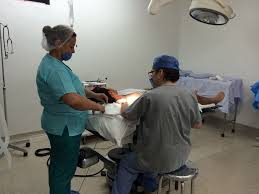
Nurses spend the entire day on their feet, so compression socks are vital to their health and wellbeing over a long career. Ideally, people should balance their time between sitting and standing each day in 15-minute intervals. Sit for 15-minutes, then get up and walk around for 15-minutes. Repeat throughout the 24-hour day. Research states that it’s ideal because that 15-minute interval swap is impossible for most of us. We have jobs and responsibilities that don’t let us create our own schedule of sitting and standing. The average job, including being a nurse, requires extensive amounts of sitting or standing.
During a 12-hour shift, a nurse likely spends 95% of their time on their feet. All of that time standing leads to poor circulation in the feet, ankles, and legs. Basically, what happens when we sit or stand for too long is the blood pools in our feet and lower legs, and doesn’t get pumped back up to the heart. The farther away blood is from the heart, the harder the body has to work to return it to the heart. Gravity and pressure also work against effective circulation in the feet and legs. Swelling starts in the feet, and can move up into the ankles and calf in people with poorer circulation, or who experience swelling over a prolonged period.
This is where the compression socks come in. You’ll notice that they are snug when you first put them on. The snug feeling starts in the foot, and moves high up the leg, to just below the knee. The compression works to push the blood up out of your foot, and through the veins in your lower leg, back up to the knee. From the knee, blood connects back into the larger veins of the thigh, and is pumped into the heart to re-circulate through the body.
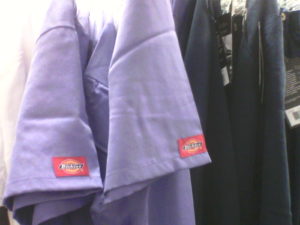
A healthy body means a healthy life. Let’s face it; you cannot take care of others effectively if you are not feeling healthy yourself. Feedback from nurses that use compression stockings states that they noticed an increased level of energy and lower fatigue since using their knee high compression stockings.
Nurses aren’t the only professionals who won’t leave home without their compression socks. They are also common in athletes, waiters, pilots, pregnant women, diabetics, people with poor circulation, and people with varicose veins. Most of these people agree that knee high compression stockings are the best choice for health and comfort.
Numerous research studies have shown the benefits of wearing compression socks to improve circulation and vein health in the lower legs. Many medical professionals recommend that knee high compression stockings be worn at all times, except when bathing and sleeping. There are no dangers or disadvantages to wearing compression socks, only benefits. The availability of free shipping makes compression socks a bargain that we can’t pass up on.
The Dangers of Swollen Legs
Symptoms of poor circulation for nurses or other individuals include numbness and tingling, in addition to swollen legs. The swelling causes discomfort and fatigue. Varicose and spider veins appear if the pooling of blood and swelling in the legs happens often enough. Varicose are the large, ugly veins popping out of the leg, generally seen on the back of the calf. Spider veins are the small bluish ones seen streaking through the lower leg.
Good circulation will lead to a healthier body, and fresh legs. When we were young, we put our bodies through a lot of wear and tear. For the most part, we were able to bounce back and keep going. The problem is, as we get older, it becomes harder to bounce back. Compression socks can help reduce the wear and tear on your legs, improve lymphatic system drainage, and break up lactic acid build up in the legs. Wearing knee high compression stockings will minimize pain and improve your recovery and endurance.

Legs that are constantly swelling are at risk for deep vein thrombosis, or a blood clot. That’s the last thing you need as a busy nurse. Blood clots are a dangerous situation, and require immediate medical attention. Blood clots can slow the flow of blood around them, and cause discoloration of the skin. In the worst case scenarios, blood clots can break away from the vein, and travel to another place in the body, including the lungs, where the effects can be devastating.
Blood clots aren’t the only reason for concern due to poor circulation. Even if you never experience a blood clot, you could have minimized circulation due to long hours on your feet as a nurse. This minimized circulation creates varicose veins. The treatment for varicose veins is to have a vascular surgeon tie off the non-working veins and divert all blood flow into larger, properly working veins.
Although this surgery is no longer as invasive as it once was, it’s not something that anyone, least of all a busy nurse, has time to sign up for. In the case of circulation, the old saying is true; an ounce of prevention is worth a pound of cure.
What’s an mmhg?
Compression socks are measured in millimeters of mercury, and that translates to the level of pressure that they provide. You’ll see it abbreviated as mmhg. Varying degrees of compression are available, from minimal compression at 8-15 mmhg to 20-30 mmhg. The lower compression socks are 8-15 mmhg, a medium level of compression is 15-20 mmhg, while a firm sock is 20-30 mmhg. Firm compression stockings at 20-30 mmhg are the most commonly used. Doctors may prescribe extra firm compression stockings with a gradient of 30-40 mmhg to patients with serious medical conditions.
Think of compression socks as a hug for your legs. The hug, or compression, prevents the blood from pooling in your feet, ankles, and calves. The higher the millimeters of mercury, the firmer the hug your feet, ankle, and legs receive. Improved circulation also moves oxygen through the body, helping muscles stay oxygenated and avoid fatigue. Increased oxygen flow also helps prevent tissue damage.
How it Works
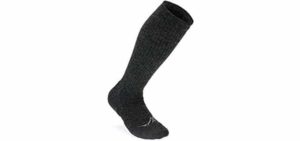
That ounce of protection is knee high compression stockings. Making the lifestyle switch to wear compression socks will prevent blood clots and varicose veins, and improve circulation in the lower legs. This will allow you to keep leading your busy life and enjoy the benefits of better health.
Compression stockings decrease swelling, increase blood flow, and support the veins in your lower legs. The external pressure created by the stockings helps your blood vessels work for you, instead of allowing them to get tired and stagnant.
Compression begins in the foot, and is graduated through the ankle area, and up the calf. This graduated pressure helps move the blood in the veins from the feet, and back up through the legs and to the heart. Compression socks come in different sizes – including ankle and stocking. You can also get just the sleeve or tube, without the foot. The best option for nurses is a compression sock that begins in the foot, and ends just below the knee.
Why Knee High
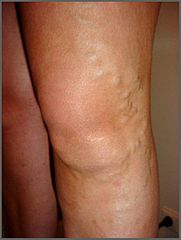
Why choose knee high compression stockings if there are so many options? Quite simply, they offer the most complete compression and are proven to work best. While some compression is better than no compression, a knee high compression stocking with 20-30 mmhg offers the most complete support for the veins, and is most effective in pumping blood out of the feet and legs and back to the heart.
They’re also comfortable; and snug but not too tight. The knee-high compression stockings cover the foot, and go all the way up to just below the knee. Knee-high compression stockings are worn on a 12-hour (or longer!) shift, an international flight, or any other adventure you have planned to improve your circulation and decrease swelling. It’s the job they were designed for. Aside from these extreme scenarios, the high stockings are great for everyday activities from the morning school carpool to grocery shopping. The knee-high compression stockings become an extension of your leg with a seamless fit and unparalleled comfort. Material in compression stockings is made for an active lifestyle, and wicks away moisture. The advanced technology used to sew the stockings allows for minimal seams and maximum comfort. Although some nurses are wary of being too warm while wearing the high compression stockings, they realize after trying them that the compression stockings breathe and work with the body.
The Benefits for Nurses
You have a unique job as a nurse. Typical shifts can be anywhere from eight to twelve hours, and the time flies by in a blur as you work with patients. Sometimes emergencies crop up, and you can be working for 16-hours before it’s time to head home. That’s a long and demanding day for anyone’s feet and legs.

The good news is, you are active and moving around. The bad news is that long days working shifts as a nurse can wear your body out physically. That’s where knee high compression stockings come in. They will help your legs keep up with the demands of the job. A nurse spends all of their time taking care of others and making sure others needs are met; it’s important to do the same thing for oneself.
The legs support two to three times the body weight of a person with every step taken. The average person takes 10,000 steps per day. That’s a lot of pressure to withstand, especially when you consider how many steps the average person takes each day. Now, consider the number of steps a busy nurse takes on a routine shift. The amount of pressure experienced by the legs is extreme, and knee high compression stockings can help relieve the pressure and keep the legs healthy and strong.
Stand out from the Crowd
You can literally stand out from the crowd. Because when everyone else is getting tired, and starting to drag, you will still have strong legs supporting you, thanks to your knee high compression stockings. When we get tired we start to lose our posture and move a little slower. When the health of your patients is on the line, you do not want to slow down, even if you are at the end of your 12-hour shift. Compression socks will help with that tired feeling and make the last hour of your shift as energetic as the first hour.
Even better than that, you can stand out from the crowd in style. Scrubs tend to all have the same look and feel. There are some more creative patterns now, but they are still scrubs. Compression socks come in many patterns and colors, and can help you express your individuality and feed your inner fashionista. Whether it’s a bright color, or an eye-catching pattern, there is a design for everyone. Prefer something a little more traditional? Not a problem, compression socks are also available in solid colors such as black, white, and navy blue.
For best results, you should replace your compression socks every three to six months, depending on how often they are worn. Similar to any garment, the material and compression break down over time as it is used. You may find that what began as a 20-30 mmhg pair of compression stockings now feels more like a 8-15 mmhg pair.
The technical material and compression also respond best to hand washing and air-drying. It helps prolong the life and firmness of the compression stockings. Most nurses choose to order a few pairs of compression stockings since they ship free, and then rotate them through their wardrobe with their scrubs.
Knee high compression stockings have been a performance secret of athletes, pilots, office workers, and everyone in between for years. It’s time for you to experience the benefits of wearing compression socks for yourself. Try wearing knee high compression stockings on your next shift. As a busy nurse, you’ll be glad to have the extra bit of support and boost for your overall health and wellbeing.
This page last updated January 7, 2022
